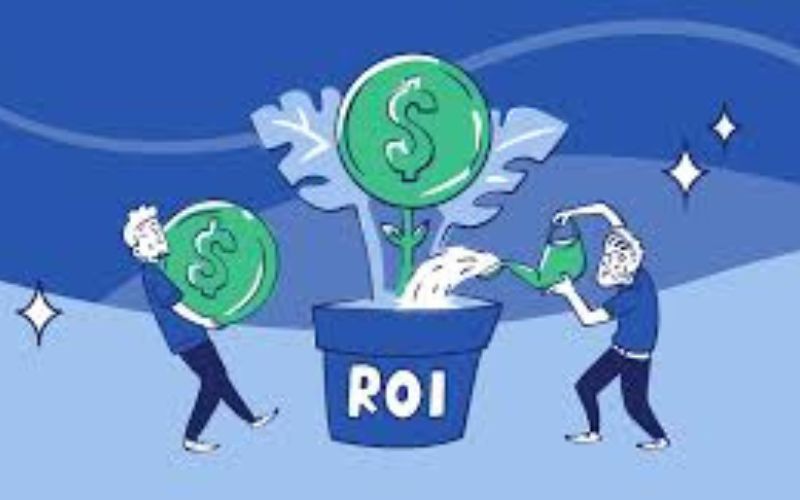You can have the best product or offer in your niche, but if it looks bad, most people won’t even give it a second glance. That’s the reality. In a digital world driven by speed and first impressions, design is no longer just about looking good; it’s about getting noticed, being remembered, and driving action.
Let’s be honest. People scroll fast. If your visual doesn’t stop the scroll, you’ve already lost the opportunity. That’s how cutthroat the online space has become. You’re not just competing with others in your industry; you’re competing with everything else screaming for attention on the screen.
Good design isn’t decoration. It’s a strategy. And it can have a massive impact on performance, whether you’re running ads, designing websites, or creating social content.
It’s More Than Pretty — It’s Performance-Driven
Design often gets dismissed as a “nice-to-have” or something you’ll deal with after everything else is in place. But here’s what most people miss: smart, intentional design can directly impact conversions, clicks, engagement, and even credibility.
Think about a landing page. If it’s cluttered, confusing, or looks like it hasn’t been updated since 2012, trust drops. Users bounce. Even if the copy is spot-on, the poor visual experience turns people off. The same goes for display ads or sponsored content. If it doesn’t look professional and scroll-stopping, it’s ignored, no matter how relevant it is.
This is especially critical when you’re working with one of the best banner ad networks for advertisers, where design is the front line. With just a few seconds to grab attention, every visual element counts. A well-designed ad doesn’t just look clean. It directs the eye, communicates a message clearly, and invites action — all without saying a word.
Good Design Reduces Friction
People don’t want to work hard to understand what you’re offering. They want clarity. Fast. That’s where good design comes in. It organizes information in a way that feels natural. It removes guesswork.
Poor design does the opposite. It introduces friction. That can look like hard-to-read text, inconsistent colors, bad spacing, confusing layouts, or anything else that creates hesitation. And that hesitation? It costs money.
On the flip side, clear and thoughtful visuals:
- Improve comprehension – People understand your message faster.
- Build trust – A professional design signals credibility.
- Boost engagement – People stay longer, click more, and explore deeper.
- Guide behavior – Strategic placement of buttons and visuals directs users to take action.
- Increase retention – Well-designed content is more likely to be remembered.
How to Tell if Your Design Is Working
A good-looking visual isn’t always a good-performing one. Pretty doesn’t automatically mean effective. So, how do you know your design is doing its job?
Start with the metrics that matter for the format you’re using. For example, if it’s a display ad, look at click-through rates, engagement time, and conversion data. If you’re tweaking a landing page, check bounce rate, form completions, scroll depth, and heatmaps.
But beyond metrics, watch how people interact. Are they hesitating before clicking? Skimming past key messages? Missing CTAs? Sometimes, even small tweaks — like increasing white space, changing button contrast, or reordering content blocks — can make a noticeable difference in how people move through the experience.
Here’s one thing to remember: if people aren’t doing what you want them to do, don’t just blame the offer or the copy. Check the design.
ALSO READ: Planning Tips for Your First Transatlantic Cruise
What “Good Design” Really Means
It’s not about using trendy fonts or flashy animations. It’s about intention. Every color, image, layout, and font choice should support the goal of the content.
Some things that consistently show up in high-performing designs:
- Hierarchy – The most important info is the most visible.
- Consistency – Fonts, colors, and spacing stay aligned throughout.
- Whitespace – Space makes content easier to digest.
- Contrast – Strong contrast helps key elements pop.
- Responsiveness – Looks and functions great across all devices.
If you’re working with a design team or outsourcing the work, push for this level of thoughtfulness. Ask why certain choices were made. If the answer is just “because it looks good,” that’s not enough. Every design decision should have a purpose tied to performance.
Where Design Pays Off Most
While good design benefits everything, some areas tend to see the biggest return when visuals are optimized. These include:
- Ads – Especially static and display ads, where you’re working with tight space and short attention spans.
- Landing Pages – Clear design = higher conversion rates.
- Ecommerce Product Pages – Better design = more trust = more sales.
- Emails – Clean visuals improve click-through and readability.
- Social Graphics – On platforms where you’re fighting for attention, visuals that stand out have a direct effect on reach and interaction.
When these areas are done right visually, they don’t just support the message, they amplify it.
Design Isn’t Optional Anymore
We’re long past the point where a slapped-together graphic is “good enough.” Your audience is more visually literate than ever. They can spot lazy design a mile away. And in most cases, they won’t give it the benefit of the doubt.
Whether you’re a small business owner, marketer, or part of a larger creative team, investing in high-quality design isn’t a bonus. It’s a requirement.
That doesn’t mean you need endless animations or fancy visual tricks. It just means being intentional. Design with purpose, align visuals with goals, and respect the role design plays in how people perceive and engage with your content.
The Bottom Line Is Visual
Every scroll, click, or conversion starts with someone looking at something. If the “something” isn’t strong enough to hold attention or guide behavior, the opportunity passes.
Good design creates clarity. It builds trust. It encourages action. And it makes everything you do — from marketing to product to user experience — more effective.
That’s the real return on design. Not just looking good, but getting results.






